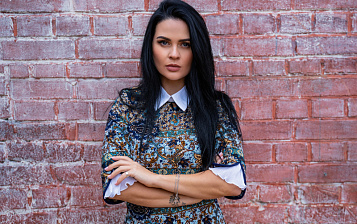One of the most expensive paintings in the world today is "Number 5, 1948" by Jackson Pollock. It was purchased at auction in 2006 for $140 million (only Cezanne's Card Players is more expensive today. It was bought for $250 million). And although Pollock's works, including "Number 5, 1948", may seem strange to a person who is not experienced in art, to put it mildly, experts have objective reasons to evaluate the artist's creations so highly. Among these reasons - Pollock's discovery of new methods of writing and, in fact, the "invention" of a new genre in painting. Naturally, Pollock was not always a world celebrity, and once his work could also be purchased for a very nominal fee. And investors, in turn, were able to see in these works an impending pictorial revolution.
To invest in painting, it is not necessary to be a collector of paintings.
You can have only one canvas, but, as they say, "but what a!". In addition, most often, canvases grow in price over time and investment in painting is an almost 100% opportunity for future earnings (or at least not depreciation of investments).
It must be said that investment in paintings is always a long-term investment. Actually, in order to invest in painting, like for any other investment, you need money.
You can take the path of least resistance and acquire canvases by recognized masters for your collection. But you need to understand that paintings, for example, by Vermeer, Chagall, Monet, Shishkin or Aivazovsky are unlikely to be purchased cheaper than one hundred thousand dollars. Yes, and they sell paintings by great artists today exclusively through auctions, which means that we still have to track possible lots and dates for upcoming auctions. It is believed that today the most expensive are the canvases of the masters of the Renaissance. If a novice investor does not have a lot of money, you can, for example, study the lists of lost paintings and go in search of a treasure.
True, in this case, you can simply not find anything and you will definitely need very detailed and highly professional knowledge in the field of art history. But if the investor himself did not complete a master's degree in art history, you can and should hire a consultant. And here it is better not to be stingy, a good consultant who can determine the authenticity of the painting with absolute accuracy and even write out a conclusion is already an excellent investment.
If the opportunity to buy a Brueghel painting or find the missing Van Gogh does not yet shine, it is worth taking a closer look at the works of contemporaries. Of course, this option also has enough risks. Perhaps even more than the previous ones. You can, of course, rely on your own instinct and find an artist who will become famous in a few years and the cost of his work will increase by 500 percent. Or you can start more modestly, spend time studying trends, and determine what kind of art is in demand today. Moreover, the demand may differ depending on the region. Here it is already worth studying the preferences of the regional public. As soon as an investor has a clear picture of what art is in demand today, you can go to the artist's studio and purchase works on request.
There is a small “pitfall” here, although it brings positive emotions rather than negative ones. You can quite stumble upon the future Warhol, but you can not stumble. In the first case, the investment will pay off a thousandfold, but in the second case, the investor has a chance to make good money. Before buying a painting from an unknown artist, you should look at it not as a work of art, but as an everyday thing and evaluate it from the point of view of a banal quality. Roughly speaking, so that the canvas does not crumble and the paint does not fall off. Then, having acquired a painting, you should ask the artist to write a few more works and ask the master certain requirements. And while the artist will be working on new works, you can sell already purchased ones.
The most attention in the art market attracts any innovation. And if an investor manages to find that artist who writes like no one else before him, there is every chance to discover a gold mine.
In order not to wander too far into the wilds of beauty, it is worth remembering that, with all the subjectivity of evaluating various art objects, there are fairly clear criteria for forming the value of a painting. No matter how strange it may sound, but the picture is initially estimated by size. Therefore, for an unknown artist, quite rightly, a large-sized painting can cost quite a lot, but, I repeat, it is expensive for the work of an unknown artist. For an initial minimum estimate of the cost of a painting, you need to calculate the perimeter of a particular canvas, for example, 100 cm + 100 cm = 200 cm. Next, the perimeter of the painting is multiplied by the artist's coefficient. The value of the coefficient is influenced by how long the artist has been writing (in other words, the length of service and work experience is estimated), how well the master is known (participation in exhibitions, articles in newspapers and magazines, critics' assessments, the presence of works in catalogs are suitable for this criterion. Participation of the artist in exhibitions in European capitals can raise the price by 10-15%, receiving a prestigious award will raise the cost by another 20 percent), the number of works sold. Accordingly, the less the artist is known, the objectively cheaper are his canvases. But if we talk about the works of recognized masters with an impressive exhibition background, presence in the media and a huge number of sold works, there are a few more points that also increase the value of the canvas.
Provenance. This is a historical "load" and one of the most important points in the evaluation of an art object. If there is some extraordinary story behind the painting, or if it was owned by some celebrity, the price of the work increases significantly. But just competent PR can also increase the cost. This happened with the painting "White Center" by Mark Rothko. In 1960, David Rockefeller bought the painting for $8,500. Then, for decades, an extensive PR campaign was launched around the canvas. There were interviews with the direct owner of the "White Center", many catalogs were published in which detailed and exciting stories about the painting were printed. As a result, in 2007, the White Center was sold at Sotheby's for $72.8 million.
Cultural and historical value. It is clear that the works of world-renowned masters of painting, paintings that belong to the world heritage will be expensive (sometimes even fabulously expensive). But the picture of a little-known author can also be of historical value. For example, if the artist managed to capture any buildings that are no longer there today. Thus, an unknown canvas can become a historical document, and the investor - the owner of the painting - has the right to expect an increase in value.
Expert review. The opinion of a qualified expert will add weight to the picture. It is important to remember that in conclusion, the art historian must indicate to which particular genre this work belongs, as well as the time of creation and confirm the authenticity of authorship.
degree of preservation. As a rule, paintings that require restoration are sold somewhat cheaper. It is assumed that the new owner will have to bear the additional costs of restoring the work of art.
But whichever way you choose to invest in art, it's worth remembering that the art market is extremely capricious. Temporary fluctuations in demand, a decline in prices for "unfashionable" art are normal here.

 DOWNLOAD
DOWNLOAD LOOK
LOOK
 Top Content of the Month
Top Content of the Month


